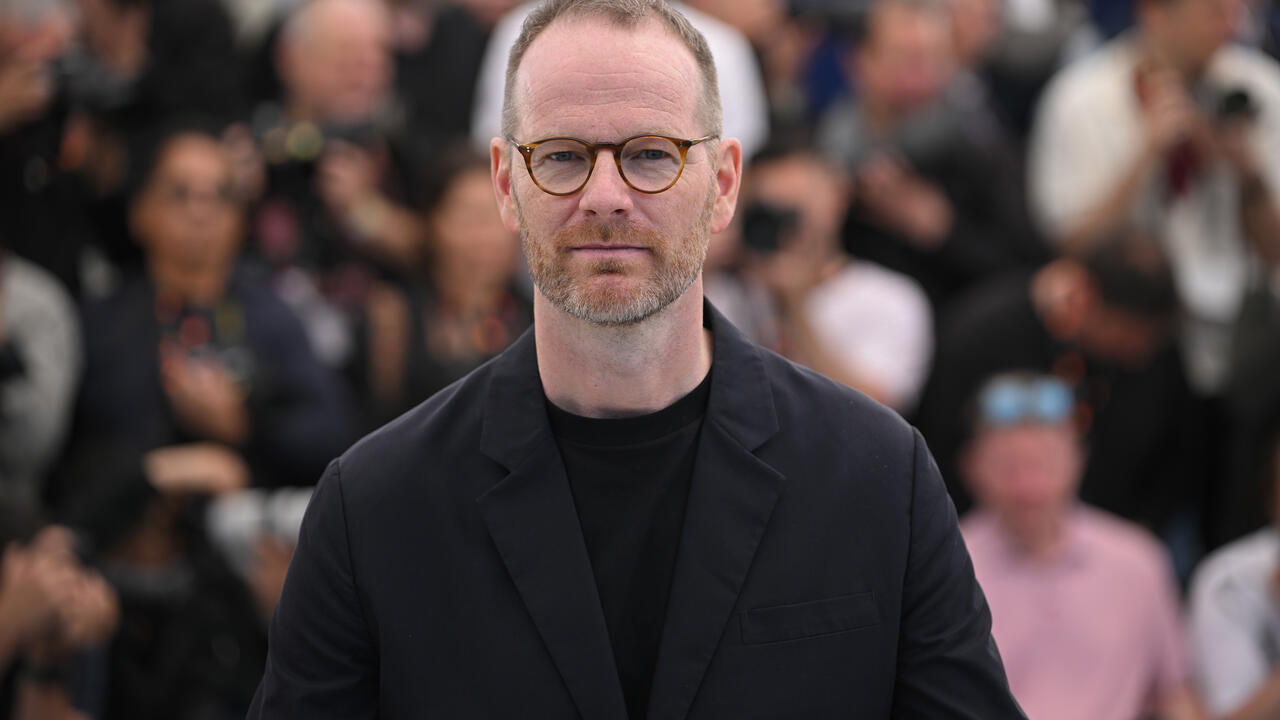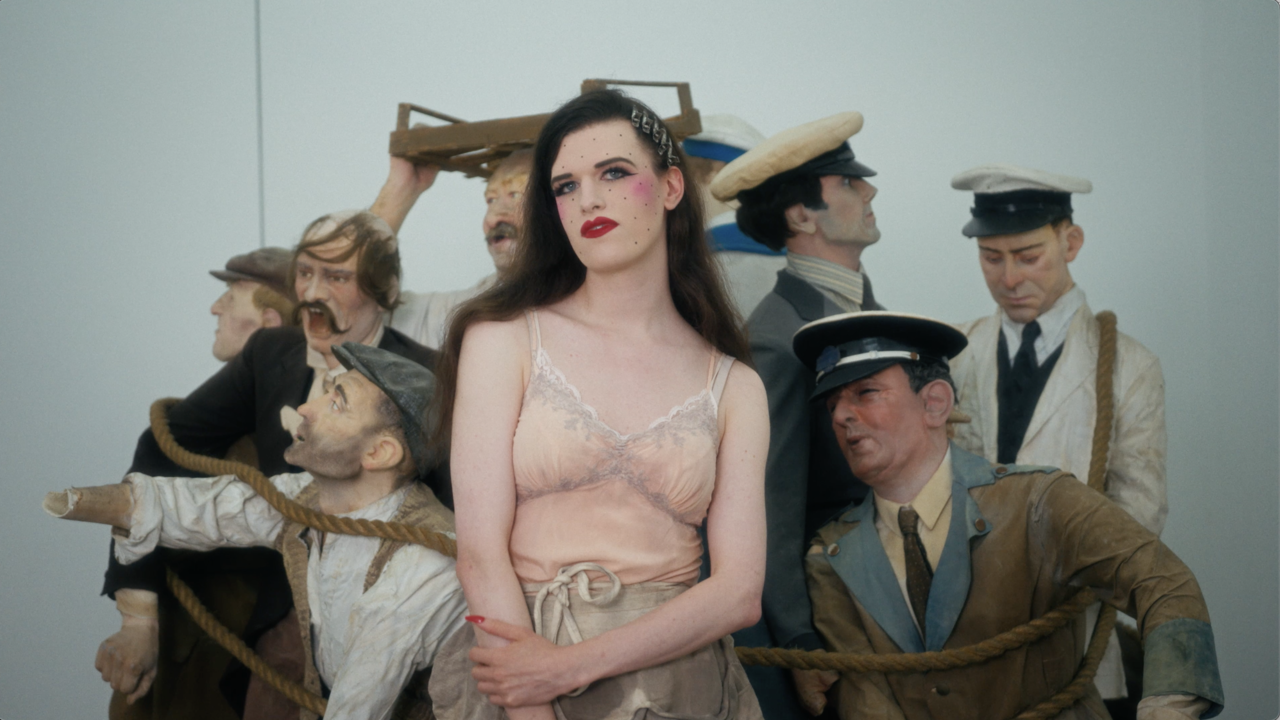Deborah Ligorio
Sedimentation and submersion; the effects of images on the past, the present and the future
Sedimentation and submersion; the effects of images on the past, the present and the future

‘A beautiful postcard,’ begins the voiceover in Deborah Ligorio’s short film The Submerged Town (2008). The image described is a close-up of an old brick clock tower, framed against a winter sky and a background of snow-capped mountains. The clock’s painted faces on both sides are faded and have long since lost their hands. Generically picturesque, the image induces a sense of déjà vu, in which an actual landscape is reduced to the pre-digested cliché of a picture postcard.
This is a common thread in Ligorio’s short film and video works, which often combine a disarmingly personal monologue (usually spoken by the artist herself, in English inflected with an agreeably thick Italian accent) with footage of uncultivated or inhabited land. Film’s authority as a medium that preserves a place in time is complicated by the spoken narrative, in which trains of thoughts are strung o/ut or abruptly dropped. The image ceases to represent just itself, but refracts through various symbolic suggestions in time with the artist’s spoken reverie.
In The Submerged Town, the camera slowly zooms out as the narrative turns to musings about the acceleration of change in the face of technological and scientific innovations. More of the clock tower is revealed, suddenly obscured by flashes of orange and red. A slow, atonal electronic soundtrack begins, while the artist voices alarming thoughts about a dubious future: ‘Present technologies have modified the environment and our behaviour. Future ones will even alter human beings themselves’. Gradually the image zooms out to reveal that the clock tower is isolated and half-submerged in the middle of a lake. It is all that remains visible of the South Tyrolean village of Graun, which was completely flooded in 1950 and whose inhabitants were consequently forced to relocate to make way for an artificial reservoir. The image of the clock tower in the lake prompts us to wonder: Does the entire village really still exist, submerged beneath the lake’s glassy surface, like a waterlogged Pompeii? Although it appears to be the result of some natural disaster, this tragedy was the result of a man-made intervention in the name of progress. ‘At the change of an era,’ Ligorio tells us, ‘it is always so that if one stays anchored to old thinking, one loses the game.’

Ligorio takes the natural or man-made environment as her starting point, and extracts the many intertwining strands of our finely balanced world. Her fascination with the often antagonistic relationship between man and nature leads, somehow inevitably, to Robert Smithson, who himself spoke of the ‘constant confusion between man and nature. Is man a part of nature? Is man not a part of nature?’1 Analogous to Smithson’s Partially Buried Woodshed (1970), which seemed to simulate the effects of a landslide or earthquake, The Submerged Town is like an accelerated example of the fate awaiting all of those precipitous dwellings destined to fall victim to rising water levels in the coming decades.
Ligorio’s inevitable journey to Smithson occurs literally in one of her earlier video works, Donut to Spiral (2004), which documents a trip through the Mojave Desert, filmed through a car window. Its dramatic terrain leads our disembodied narrator (speaking this time in Italian, with subtitles in English) to comment: ‘It becomes difficult to decide if it is reality or a maquette.’ Suddenly, we see Smithson’s Spiral Jetty (1970) in a snow-covered lake: ‘This trip had a destination,’ announces Ligorio, much to our surprise. But without the striking contrast of the lake’s red water, this image does not live up to our accumulated, second-hand memories of Smithson’s work: ‘This image is disappointing,’ intones the artist. ‘This is a dissolved image.’
Ligorio’s videos are often excursions seeking clarity and understanding in the face of a suffocating accumulation of images: a desert landscape seen through a car window, a volcanic mountain from the air, or a deep-sea voyage following the path of an underwater communications cable. Earlier videos, from 2001 to 2003, are line-drawn animations in which fluid, graphic patterns are choreographed to minimal electronic soundscapes accompanied by monologues that interlace the personal and the ecological. A kind of obsessive patterning is at work – a desire to keep up with the endlessly fluctuating nature of things and elucidate it intellectually, despite the wandering nature of thoughts. This patterning also occurs in more recent collages on paper, such as the series ‘Variazione’ (Variation, 2008), in which black and white figures are arranged in synchronized choreographies that repeat until they start to resemble scientific models.
In Ligorio’s films, time itself assumes a pattern, taking on a plasticity that is partly due to the time-based nature of the medium, but also due to her interest in entropy. Jennifer Roberts, writing about Spiral Jetty, describes it succinctly: ‘Time does not “pass” or “fly”, it builds up as a material sediment that remains on hand indefinitely … preventing, by its sheer opaque accumulation, any attempts to produce history by returning to or re-viewing the past.’2 For Ligorio, just as conflicting memory-banked images form a residue that clouds our clear view of reality, time is thick with irreversible changes, themselves inscribed on the land, if not in the very air, around us.
1 Robert Smithson in ‘Entropy made Visible. Interview with Alison Sky’, Robert Smithson: The Collected Writings, ed. Jack Flam, University of California Press, Berkeley, 1996, p. 308
2 Jennifer L. Roberts, ‘The Taste of Time: Salt and Spiral Jetty’, Robert Smithson, Museum of Contemporary Art, Los Angeles, and University of California Press, Berkeley, 2004, pp. 98–9






















